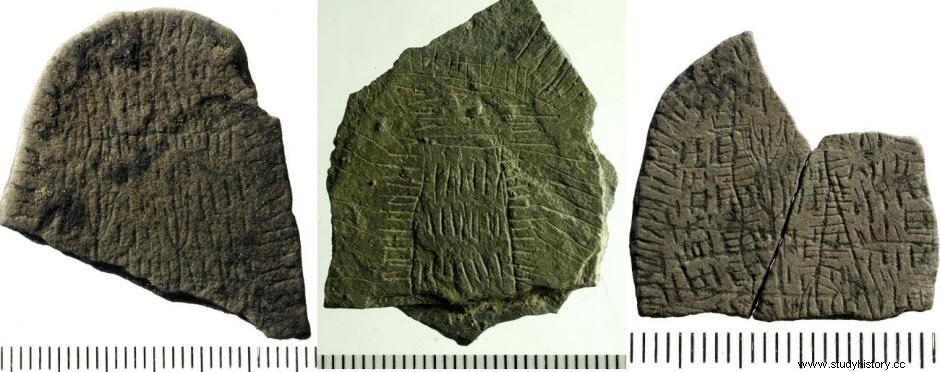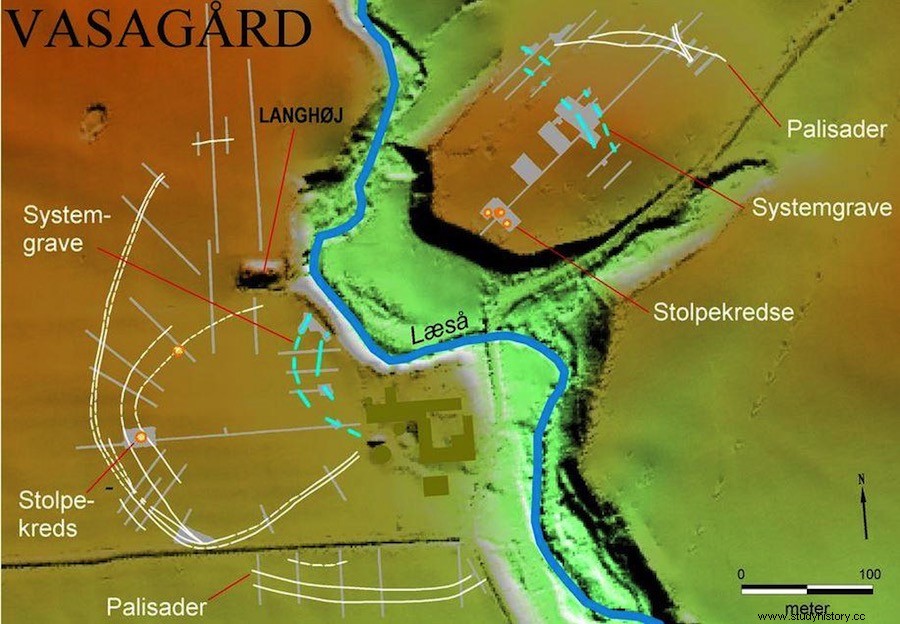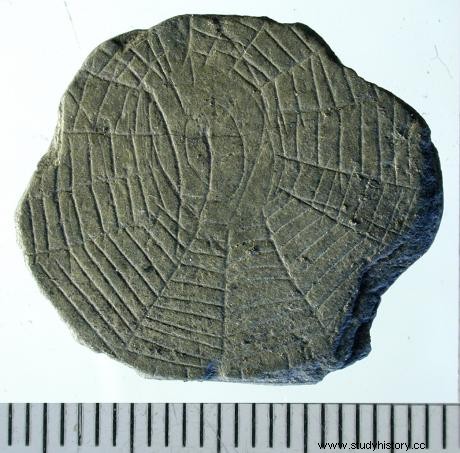Excavations carried out on the Danish island of Bornholm in the Baltic Sea have discovered some 300 small stones decorated with different motifs, dating from the Stone Age, some 5,000 years ago.
Many of them are sun stones , round in shape and with circular motifs, already known to researchers since 1995 and believed to represent the sun. But others are square and the decoration seems to represent fenced fields, a motif never seen before.
According to Lars Larsson, professor emeritus at Lund University in Sweden, these square stones are especially strange, it is impossible to know what they were used for .

They appeared in the south of the island, in an area called Vasagård, which is bisected by a river and appears to have been used for rituals during the Stone Age. In fact, the area was completely surrounded by several concentric palisades, within which there must have been numerous temples round where solar rituals would be performed.
Both the palisades and the temples were continually renovated over the centuries, using tons of wood to keep the gigantic monument standing. That is why archaeologists think that something of this magnitude has to be related to religion and rituals.
This theory seems to be reinforced by the fact that the stones appeared broken and burned in concentrated deposits. Perhaps they could have been used as amulets or represent a kind of transition between life and death.

Some of these square stones also have decorations that look like spider webs, a motif also unknown until now.
According to archaeologist Flemming Kaul, from the National Museum of Denmark, the square stones would represent grain fields with some kind of protection. And probably at some time of year the ritual would involve holding a sun stone and symbolically passing it over the stones representing fields, hoping that would produce some sort of magical reaction.

But they also do not rule out that they may have been used for other purposes, such as the transmission of some type of cultural information. Many of the stones appear to have been part of a larger panel that was broken, then cut into round and square stones and deposited in tombs.
The oldest rock carvings in Denmark also appeared at the same site, dating from the end of the Stone Age, and which are considered to be the first sculptures made in southern Scandinavia before the Bronze Age.
